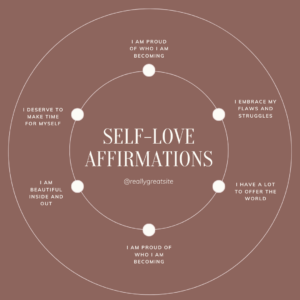Feeling overwhelmed, exhausted, and on the verge of burning out? You are not alone. Your well-being matters, and it’s time to prioritize self-care and seek support.
Dear ladies,
feeling the weight of the world on your shoulders? It’s okay to admit you’re burnt out. We understand the struggles you face every day, juggling countless responsibilities. But remember, self-care isn’t selfish; it’s essential. Let’s break the stigma around burnout and support each other in this journey towards healing and balance. Your well-being matters!💖⠀
Imagine feeling engulfed by an invisible fire, sapped of vigor, and struggling to find joy in pursuits you once loved—this is the crippling reality of burnout. In this article, I am determined to guide you through understanding burnout syndrome, its signs of burn out such as excessive fatigue, decreased productivity, and a dwindling spark for life. More importantly, I’ll share with you ten effective ways to combat mental burnout by employing the power of self-embrace. From unearthing strategies like unplugging from technology to fostering life burnout prevention through work-life integration and the science-backed approach of Forward-Facing®, we’ll navigate together towards reclaiming our energy and joy. Join me in uncovering the proactive steps and practical strategies necessary for managing the burnout signs and rediscovering the balanced, fulfilling life you deserve.
Understanding Burnout Syndrome
Burnout syndrome, a term we often hear bandied about in our high-speed, productivity-obsessed world, is much more than just a buzzword. It’s a real and pressing issue, recognized in the International Classification of Diseases (ICD-11) as an “occupational phenomenon” that stems from chronic workplace stress. Imagine waking up day after day feeling like you’re running on empty, your enthusiasm for work has dwindled, and you’re just going through the motions—this is the essence of feeling burnt out.
Symptoms of burnout can manifest in various ways, affecting our physical and emotional well-being. You might notice a constant feeling of tiredness that no amount of sleep can fix, or perhaps headaches have become your unwanted daily companion. Emotionally, burnout can lead to a sense of anxiety that lingers, a growing cynicism towards your job, or even a tendency to isolate yourself from colleagues and loved ones. Behaviorally, it might show up as procrastination or a drop in work performance. These are the signs of burn out that can’t be ignored, signaling that it’s time for a change.
 The path to burnout is paved with several risk factors. You might be juggling too many responsibilities, both at work and home, or perhaps your job is a high-pressure environment where the stakes always feel sky-high. Lack of proper training or working long hours without adequate breaks can also contribute to mental burnout. Additionally, our own personal characteristics play a role. If you lean towards perfectionism, set sky-high expectations for yourself, or struggle with inflexibility, you might be more susceptible to life burnout.
The path to burnout is paved with several risk factors. You might be juggling too many responsibilities, both at work and home, or perhaps your job is a high-pressure environment where the stakes always feel sky-high. Lack of proper training or working long hours without adequate breaks can also contribute to mental burnout. Additionally, our own personal characteristics play a role. If you lean towards perfectionism, set sky-high expectations for yourself, or struggle with inflexibility, you might be more susceptible to life burnout.
Recognizing these warning signs is crucial. It’s about listening to our bodies and minds, understanding when they’re telling us that the burden is too much. To prevent burnout, we need to prioritize rest, strive for a work-life balance, set realistic work limits, and not hesitate to seek assistance when the weight becomes too heavy to bear alone. It’s about building resilience through self-care and managing stress before it manages us. Remember, tackling burnout isn’t just about recovering from a temporary slump—it’s about creating a sustainable way of living and working that nourishes rather than depletes us.
The Power of Self-Embrace in Managing Burnout
 Amidst the relentless pace of our lives, where the specter of burnout looms large, the art of self-embrace emerges as a beacon of hope. It’s about turning a compassionate eye inward, recognizing our own humanity, and offering ourselves the same kindness we would extend to a dear friend. Self-embrace is not about indulgence; it’s about acknowledging our limits and treating ourselves with the care we deserve. This practice is vital, as it sets the stage for a healthier approach to work and life, where we are not perpetually running on empty but are replenished and ready to face challenges with resilience.
Amidst the relentless pace of our lives, where the specter of burnout looms large, the art of self-embrace emerges as a beacon of hope. It’s about turning a compassionate eye inward, recognizing our own humanity, and offering ourselves the same kindness we would extend to a dear friend. Self-embrace is not about indulgence; it’s about acknowledging our limits and treating ourselves with the care we deserve. This practice is vital, as it sets the stage for a healthier approach to work and life, where we are not perpetually running on empty but are replenished and ready to face challenges with resilience.
Incorporating self-compassion into our daily lives can be transformative. It begins with small, intentional acts that signal to our bodies and minds that we are worthy of care. Here are some practical ways to weave self-embrace into the fabric of our everyday:
-
Mindful Mornings: Start the day with a moment of mindfulness, perhaps through meditation or simply sitting quietly with a cup of tea. This practice helps us tune into our needs and sets a calm tone for the day ahead.
-
Nourishing Nutrition: Opt for meals that fuel your body and soul. Eating well is a fundamental form of self-care that sustains our energy levels and improves our mood.
-
Movement Matters: Regular exercise, whether it’s a brisk walk or a dance class, not only keeps us physically fit but also releases endorphins that combat stress. By engaging in these self-care practices, we’re not just preventing burnout; we’re actively enriching our lives. It’s about choosing to pause and refresh, rather than pushing through exhaustion. This self-compassion is not a luxury but a necessity for long-term success and well-being, as underscored by Harvard Business Review. It’s a way to ensure that our professional drive doesn’t overshadow the need for personal fulfillment and happiness. Embracing oneself may initially feel awkward, especially for those accustomed to a relentless work ethic. However, the benefits of this approach are undeniable. Studies have shown that self-compassion can lead to lower levels of anxiety and stress, making it a powerful ally in the fight against burnout. Expressing empathy towards ourselves evokes physiological responses that calm us in the moment and contribute to our long-term sustainability.
Ultimately, the journey to overcoming burnout is not just about recovering from a state of mental exhaustion; it’s about rekindling the fire of our passions and aspirations. It’s about recognizing the signs of burn out and responding with self-embrace rather than self-criticism. By practicing self-care and empathy, we not only heal ourselves but also forge deeper connections with those around us, enhancing our collective ability to thrive in this fast-paced world.
10 Ways to Utilize Self-Embrace and Self-Care
 As we continue to explore the realm of self-care and its pivotal role in preventing burnout, it’s essential to recognize that small, consistent actions can lead to significant shifts in our well-being. Here are ten tailored strategies that I’ve found invaluable in my own journey to ward off the symptoms of burnout, and I hope they resonate with you as well:
As we continue to explore the realm of self-care and its pivotal role in preventing burnout, it’s essential to recognize that small, consistent actions can lead to significant shifts in our well-being. Here are ten tailored strategies that I’ve found invaluable in my own journey to ward off the symptoms of burnout, and I hope they resonate with you as well:
-
Establishing Boundaries: Learning to say “no” is not just about declining extra tasks; it’s about honoring your personal limits. For me, setting clear boundaries between work and personal time has been a game-changer in maintaining my mental health. It’s about giving myself permission to disengage from work-mode and fully immerse in restorative activities. This conscious separation is instrumental in managing the signs of burn out, allowing us to recharge and return to our responsibilities with renewed vigor.
-
Mindfulness and Meditation: Integrating mindfulness practices into my daily routine has been a soothing balm for my often-overworked mind. Even a few minutes of focused breathing or meditation can create a sense of calm amidst the chaos. It’s about grounding ourselves in the present moment and acknowledging our emotions without judgment. I’ve noticed that this practice not only reduces stress but also enhances my ability to empathize with others, a critical aspect of avoiding emotional exhaustion, particularly in high-stress professions like healthcare.
-
Physical Activity and Nature: Never underestimate the power of a walk in the park or a quick workout session. Movement not only revitalizes the body but also clears the mind. I make it a point to incorporate some form of exercise into my day, whether it’s a yoga session or a brisk walk. Coupled with the healing effects of being in nature, this strategy is a potent antidote to the physical and mental fatigue characteristic of burnout.In addition to these personalized strategies, I’ve found that weaving a variety of self-care activities into my life not only prevents burnout but also adds joy and richness to my everyday experience. Here’s a list of activities to consider:
-
Creative Outlets: Engaging in arts and crafts or adult coloring books can be surprisingly therapeutic. They offer a creative escape and a way to express oneself without the pressure of perfection.
-
Laugh and Connect: Sharing a laugh with friends or enjoying a heartwarming conversation can uplift your spirits like nothing else. Positive social interactions are essential for our emotional health.
-
Nourish Your Body: Don’t forget the basics—eating healthily, staying hydrated, and getting enough sleep are foundational to our ability to cope with stress. Treat your body with respect, and it will support you through tough times. Remember, the key is to start small. Choose two or three self-care activities that appeal to you and make them a non-negotiable part of your routine. Perhaps you could start your morning with a gratitude practice or end your day with a self-safe hypnosis session. The important thing is to be consistent and intentional with these practices. Over time, you’ll likely notice a positive shift in your energy levels and overall mood, signaling a move away from the brink of burnout. Finally, I want to stress the importance of seeking support when needed. Personal counseling or coaching can provide a safe space to unpack your feelings and develop coping strategies tailored to your unique situation. If you’re feeling overwhelmed or notice the signs of burn out creeping in, don’t hesitate to reach out for help. It’s a sign of strength, not weakness, to acknowledge when you need a helping hand on your journey to well-being.
 In conclusion, our voyage through understanding burnout syndrome and the healing practice of self-embrace reveals the significance of recognizing early signs of burn out and taking proactive steps towards self-care. By integrating mindful mornings, nourishing nutrition, and movement into our daily routine, we set ourselves on a path to combat exhaustion. We have underscored the importance of establishing boundaries, mindfulness and meditation, physical activities, and engaging in creative and social pursuits as personalized strategies for sustaining energy and joy in our professional and personal lives.
In conclusion, our voyage through understanding burnout syndrome and the healing practice of self-embrace reveals the significance of recognizing early signs of burn out and taking proactive steps towards self-care. By integrating mindful mornings, nourishing nutrition, and movement into our daily routine, we set ourselves on a path to combat exhaustion. We have underscored the importance of establishing boundaries, mindfulness and meditation, physical activities, and engaging in creative and social pursuits as personalized strategies for sustaining energy and joy in our professional and personal lives.
As we navigate the complexities of our fast-paced world, let us not lose sight of the broader implications of burnout on our overall well-being. Taking the time to invest in self-embrace and self-care is not a luxury but a necessity, crucial for maintaining balance and fostering a fulfilling life. Let this article serve as a reminder of the power within us to affect positive change, encouraging ongoing awareness and intentional action towards a resilient and enriching existence, free from the shackles of burnout.
The following health tips are for informational purposes only and should not replace the advice of a healthcare professional. Always consult with a doctor or qualified healthcare professional before making any changes to your diet, exercise routine, or health regimen. Individual results may vary, and it is important to consider any medical conditions or existing health concerns before implementing new health tips or practices.


